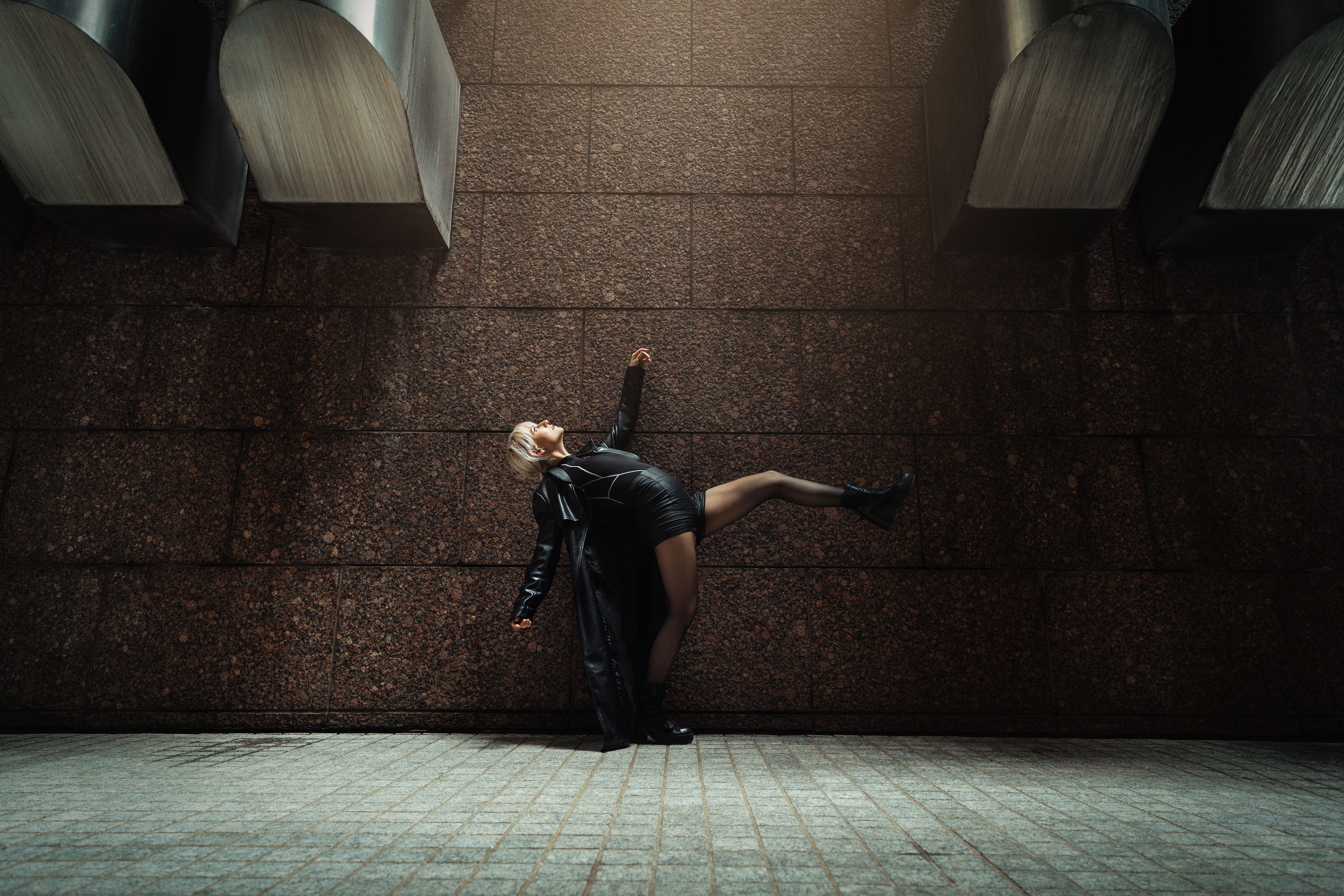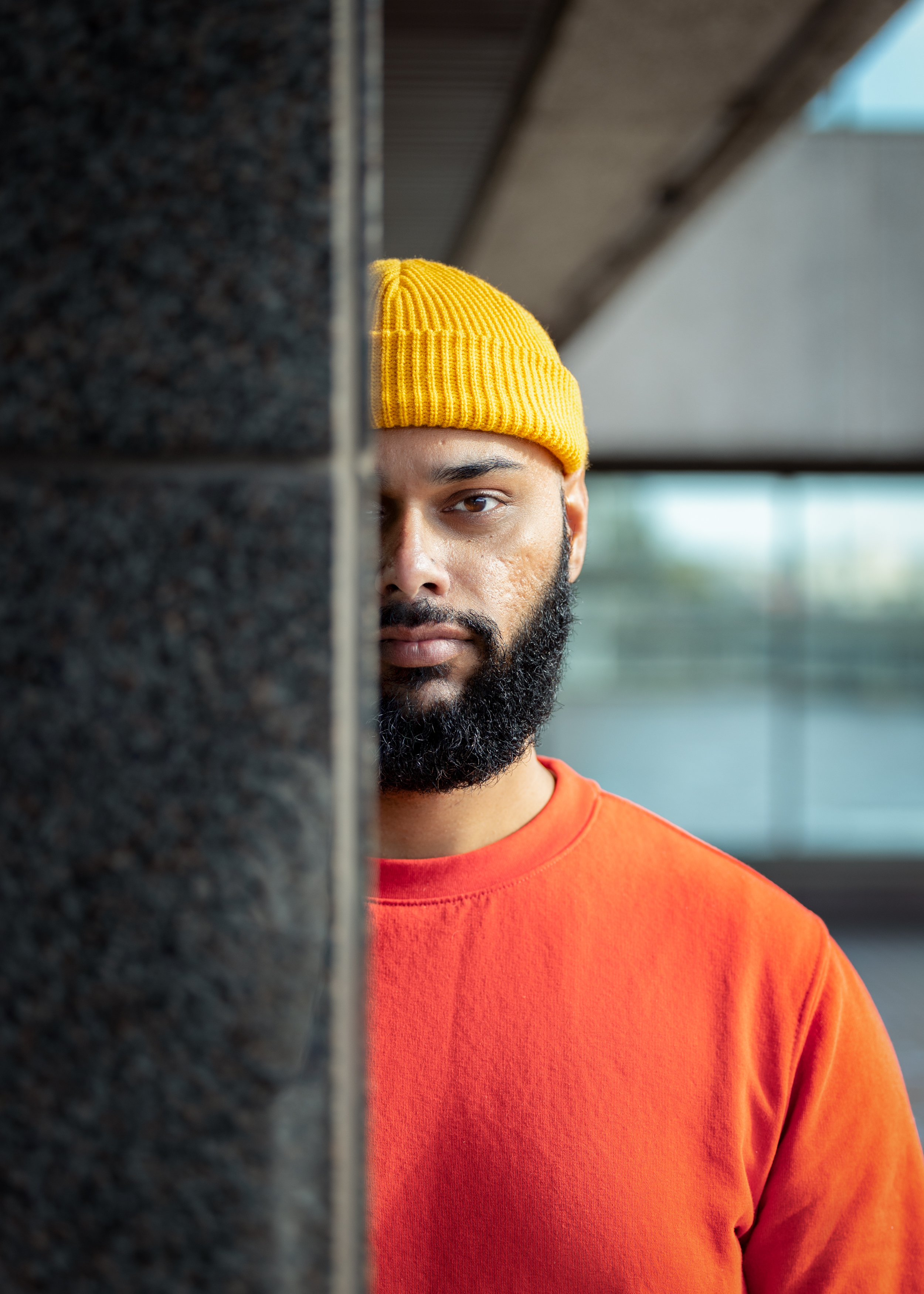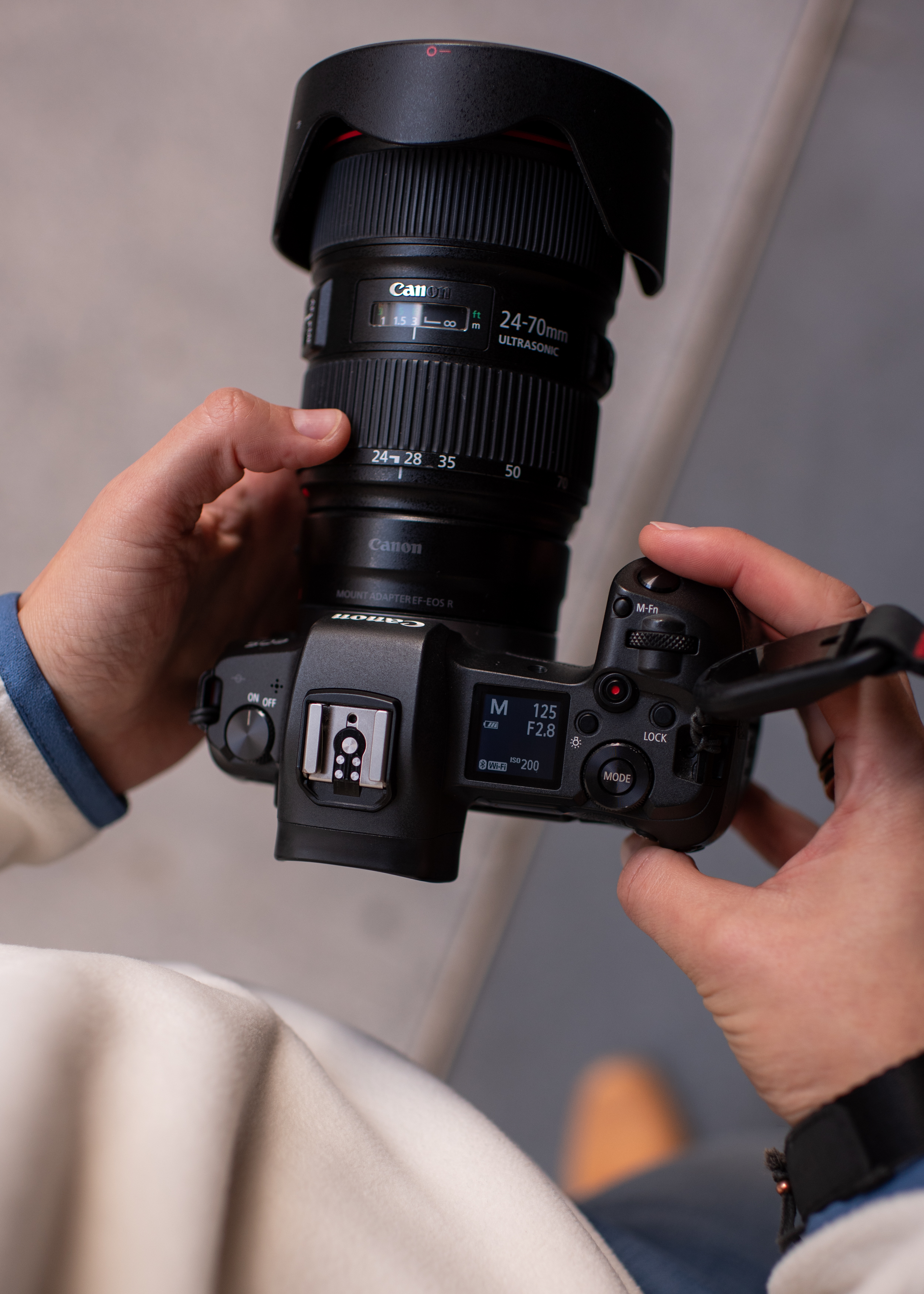Shoot like a pro: Urban Energy

I was recently reading a book on the history of photography and, leafing through its pages, I couldn’t help but appreciate the freedom digital imaging affords us. Looking at early portraits taken on plate cameras – each of which required exposure times of several seconds, if not minutes, due to the low media sensitivity – it was easy to see how restricting that equipment was in terms of composition, backgrounds and lighting conditions.
While studio photography is clearly still a large part of the portrait photographer’s workflow, modern technology allows us to take our setups outside, making use of any location as a stage. Of course, leaving the controlled conditions of a studio space introduces its own challenges.
It’s those unique quirks I’m keen to explore today, and Paula Stopka is the person armed with all the answers. I’m meeting Paula for a location portrait shoot in London. Cities offer a huge variety of textures and colors to work with but they are also full of distracting details, something that Paula will have to be mindful of when composing her images.
“It’s important to have an honest discussion with the model. Be open about your vision”
Paula Stopka
I start by asking her what she looks for when first arriving at an outdoor location and how she plans her portraits around what is on offer. “Usually, what I do is I pay attention to everything that is going on around me, from the light to any unique features I see in the buildings,” she explains.
“Normally, I’ll go to the location by myself before the shoot. I might take some pictures on my phone and scout the area so, once the client arrives on the day, I know exactly where I want to position them. Sometimes, during the shoot, a few new ideas will come into my mind and I’ll ask my subject whether they would like to try a few different poses. So, while it is quite open and flexible, the shoot already has some kind of structure.”

Upon seeing Paula’s subject today, Tahir, my eye is immediately drawn to his bright orange jumper, which will stand out beautifully against the grey concrete of the urban surroundings. This is clearly not a happy accident, so I ask Paula how she decides what does and what doesn’t make a great portrait background out ‘in the wild’ and how she plans to direct the subject in that space once the shoot begins.
“I often come up with a mood board for the photo session and discuss this with the model. We talk about the vision, ideas and overall mood we aim to achieve days before the photo shoot takes place. This early planning helps us understand not only the purpose of the photo session but also builds trust and creates a comfortable atmosphere.”
Paula begins to work some angles, capturing Tahir from multiple elevations. “On location, I pay close attention to unique features that can help me envisage how I want the final image to look. This could be leading lines, different colors, backgrounds, symmetry or any other elements, such as stairs or flowers – anything that might give a different look to the composition really.”
Spotting a potential contrast to complement Tahir’s colorful outfit, Paula moves him to make the best use of separation from the background tone. “I position the model to complement these elements or draw attention to them, for example, by using lines. If I have a model who is wearing contrasty colors, I’ll try to look for elements that can make it stand out even more by positioning the subject in front of the dark background wall. I’m looking to make that color really pop.”
Paula asks Tahir to sit on the wall of a stairwell, which enables her to shoot up towards him, exaggerating the perspective. She then asks him to hold out his hand, which further introduces a sense of actively using the space available and adds depth. He isn’t simply sitting still but demonstrating his energy. I notice this is a far cry from many traditional portrait sittings I’ve observed in the past, and Paula is quick to highlight that it’s an integral part of her style.

“I love to get creative with my photography. For instance, I might even suggest dynamic poses like jumping or leaning forward – something different just to trigger the imagination so that it’s not a traditional way of taking portraits. I see it as a collaboration with the model. Because of my style, they know that they won’t get the traditional portrait, but they will get something that is a bit more artistic.”
This strikes me as a hugely effective way of making use of an outdoor space, truly taking advantage of the freedom of being out of the studio. But how does Paula’s approach differ between working with professional and non-professional models in front of her lens?
“I’m trying to get into the fashion field, where I work with professional models. I’m getting there but it’s still a learning process for me. Therefore, a lot of my portrait photography is of people who want to have some images taken for their own memories. This is why it’s important to have a proper conversation with them before the photo shoot and even meet face-to-face, if possible. This helps a lot during the live shoot.
“I think it’s important to have an honest discussion with the model and to be open with them about your vision. I often have a very clear idea going in what it is I want to achieve, so I tell them how important it is for them to let me know if something is uncomfortable.”
Paula moves Tahir to another position, where she uses a window to capture a split reflected image, ensuring she incorporates as much of the environment as possible. With such a variety of potential images, I wonder if there is a core set of shots that a photographer should capture. “I would say that I usually start with a few similar, easier shots each time, just to warm up.” And what about rights – does she often have to manage property permissions when she is shooting on location?

“When I’m working with fashion brands, yes, this definitely has to be covered. I think this is something all photographers should be aware of. However, I tend to choose locations that I know won’t create issues, so it’s often unnecessary for many of my sessions.”
As Paula places building elements between her and Tahir to create a three-dimensional feel, it’s clear that to get as much from an environmental portrait as possible, you need to go all-in with using the space, it’s about more than backgrounds. But how does Paula deal with the myriad aspect ratios of social media when framing location shots?
“Someone asked me recently why I was shooting portraits in landscape format and I said it was just part of my process. I wasn’t really thinking about it. I’m also a graphic designer, which I feel helps me with planning layout and presentation.”
And what about post-processing? “Authenticity is important to me. But I believe we all have a story to tell and if something isn’t working, I’ll try and do something about it. There is no rule that I set myself and I’m quite open to exploring… I load up Photoshop and just let my creativity flow. I think that’s what I love about art in general – it gives both you and your subject the freedom to express yourselves.”
Paula's shoot setup

1) Mirrorless camera
While it is by no means essential to use a newer mirrorless camera model for location shoots, the weight saving can be highly noticeable during a long day of taking images. Meanwhile, the smaller form and thinner profile of many mainstream mirrorless cameras creates less of an obstacle between the photographer and the subject, and the 100% viewfinder offers a natural view of the scene being shot.
2) Constant aperture zoom
A standard focal length can be more useful for location portraiture than a telephoto prime lens, due to the compositional freedom. A lens model with a constant aperture, whether f/2.8 or f/4, prevents exposure and depth of field changes between frames.
3) Lens hood
Since you can’t move the light source as easily as you can in the studio, should you encounter flare, a lens hood is an essential item when shooting out on location. In urban environments, such as the one Paula was shooting in, there can be many direct light sources, such as artificial bulbs and reflected points in glass buildings.
4) Removable strap
A camera strap is useful for ensuring the safety of your equipment when shooting in an unfamiliar environment. However, the types bundled with your camera are often cumbersome and easily tangled. A removable clip system, like on Paula’s PeakDesign model, is a good compromise.

Work with outdoor light
Pro tip: Managing ambience
“I once had a shoot in the middle of the day in completely harsh lighting. Many photographers would point out that this is far from the ideal time to shoot portraits, but we were on location and it was the only time we had.
“Instead, I considered how I could use the light for a unique effect and placed the subject between the dark and the light. It actually turned out to be really effective. If you can’t change the lighting, alter your composition to make a feature of it and complement this with your post processing.”

Born and raised in Krakow, Poland, Paula is a London-based graphic designer and photographer. Having been an enthusiastic photographer since her teenage years, Paula is now a full-time working pro, blending two of her passions in image creation and graphic design. Her photography covers a variety of genres from fashion portraiture to landscapes and architecture.
Paula’s favorite photo gear

Main camera
Canon EOS R Featuring a 30MP full-frame sensor, Canon’s first RF-mount body has a solid build for use in a range of outdoor conditions, an articulated screen for low-level shooting and an AF system with 5655 selectable points.
Lenses
“This lens is my all-time favourite, it never leaves my backpack,” says Paula of the Canon RF 70-200mm f/2.8L IS USM, which balances the sharpness she needs for capturing textured environments with low weight – handy on location shoots. Meanwhile the Canon EF 24-70mm f/2.8L II USM, built for the EF mount, this staple of many Canon photographers’ kit bag can be repurposed on Paula’s mirrorless cameras using the adaptor shown below. The f/2.8 enables Paula to be creative with backgrounds in her portraits.
Lens adapter
The popular Canon Mount Adapter EF-EOS R enables older glass to be mounted on newer mirrorless camera bodies, such as Paula’s EOS R5. Other brands offer similar products, such as Nikon’s FTZ II adaptor for DSLR lenses.
Flashgun
The Godox V1 is a powerful third-party speedlight that offers a fast 1.5-second recycling time, an auto-zoom feature, a built-in LED modeling lamp and a versatile swiveling head, allowing for easy and dynamic control of ambient lighting.
Backpack
“Whenever people ask me what backpack they should get for their photo gear, I always recommend this one,” Paula says of the LowePro Flipside Backpack 450. “It’s comfortable and packs pretty much all of my gear, including my laptop and clothes.”
3 top tips from MPB

Get the most out of your urban portraiture with MPB's top tips:
1) Compact mirrorless cameras
Opt for lightweight and compact mirrorless cameras for urban portrait agility. Their portability ensures quick and discreet shooting, capturing candid moments without being intrusive.
2) Versatile prime lenses
Choose versatile prime lenses with wide apertures (eg. f/1.4 or f/1.8) for urban portrait flexibility. These lenses allow for creative depth of field and perform well in varying light conditions, emphasizing your subject against dynamic city backdrops.
3) Fast autofocus technology
Prioritize cameras with fast autofocus technology to seize spontaneous urban moments effortlessly. Swift and accurate autofocus ensures you never miss a crucial expression or gesture, allowing you to create compelling and authentic urban portraits. Streamlined gear choices maximize your ability to navigate the cityscape and capture memorable portraits.
Get the Digital Camera World Newsletter
The best camera deals, reviews, product advice, and unmissable photography news, direct to your inbox!
Digital Camera World is one of the leading authorities on camera and photography news, reviews, techniques, tutorials, comparisons, deals and industry analysis. The site doesn't just specialize in cameras, but all aspects of photography, videography and imaging – including camera phones, gimbals, lenses, lighting, editing software, filters, tripods, laptops, printers, photo books, desks, binoculars and more.
Whether you're using, looking to buy or trying to get the most out of a compact camera, action camera, camera drone, cinema camera, beginner camera or professional camera, Digital Camera World has a roster of experts with combined experience of over 100 years when it comes to cameras, photography and imaging.

